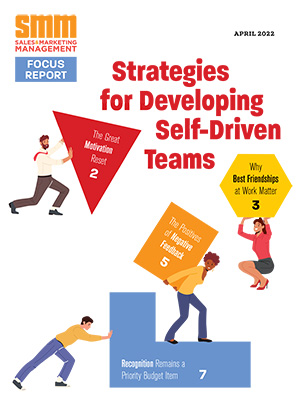The world of big data is prevalent in every industry including marketing. I’ve been selling creative campaigns for more than 20 years, but clients are not responding to pure creative ideation like they have in the past. They expect the ideas to be rooted in data before we even discuss creative. The data is now driving the ideas.
Clients want their creative campaigns to be as bulletproof as possible to maximize ROI. The data and the digital landscape allows us to track the customer journey all the way through to the sales conversion. Traditional data has shown us where we’ve been; science shows us where we are going and why.
We’re now seeing some of the largest loyalty companies acquire agencies and vice versa with the ability to mine the data, segment the audiences, find the trends and then develop the communication strategies that enhance the engagement experience with the goal of retaining their consumers. This is positive, as we are breaking the myths that marketing is hard to measure ROI and only the “creative people” know if an idea will work or not. Marketing teams on the client side are being equipped with an arsenal of tools to optimize their campaigns in real-time.
How it works
Not sure how to use data with creative? Here are three ways to get started.
1. Drive the Ideation
We’ve all been to the brainstorm where everyone sits around the room and stares at each other. Why start with a blank slate? Data provides the insights to spark the creative process. Good stimuli for the brainstorm can catapult you light years ahead, but where do you get it? Data can inspire breakthrough ideas. Look at the story the data is telling and you’ve got a huge leg up.
2. One size doesn’t fit all
Most marketers are familiar with segmentation based on readily available demographics, but with the right data you can start to see behavioral groupings in segments or even predict what customers are likely to do.
For example, let’s say there are customers who use your services once a month and others who only use it five or six times a year. If you can bump up that less-frequent group, the difference could be huge. You wouldn’t communicate with them the same way you talk to the group that comes every month, right?
But that’s really an oversimplification.
Ideally, we’d be segmenting based on more factors such as, how often they visit the website, or interact with social media, etc. The possibilities are limitless. When you overlay all of the data, interesting patterns emerge. With data, you can segment your audience and target them with different messages to be the most effective.
3. Learn as you go
Optimize in real-time with data. Listen to your audience and make adjustments along the way. We like to say that decision science is forward-thinking rather than backward-looking. The best data and creative groups are using artificial intelligence (AI) to make their efforts more relevant and effective.
We recently partnered with HSBC using AI to predict the redemption of loyalty program rewards with HSBC’s new suite of credit cards. Of those who received the targeted messages and redeemed, 70 percent redeemed in the AI recommended categories. The number of opened e-mails increased 40 percent among the AI group.
According to Marcos Meneguzzi, head of cards and unsecured lending at HSBC, “These initial results show that our customers are responding to a more personalized customer experience.” From the brand perspective, the use of AI allows companies to serve customers better with a more customized and targeted loyalty program.
Typically, ad agencies run creative and then analyze results. Turn that upside down and use data to inform the creative. Invite the data science analysts to your creative brainstorm or better yet, data analysts should be a regular part of your creative team. Insights from data can be key during brainstorming or help measure results and demonstrate ROI.
Once you realize what you have access to, using data will make everything else you did before seem irrelevant and chances are you’ll forget what it was like to execute campaigns without it.
Nick Foppe is managing director of Cartwheel, a full-service digital agency with an upside down approach to advertising, using data and insights to drive creative.

